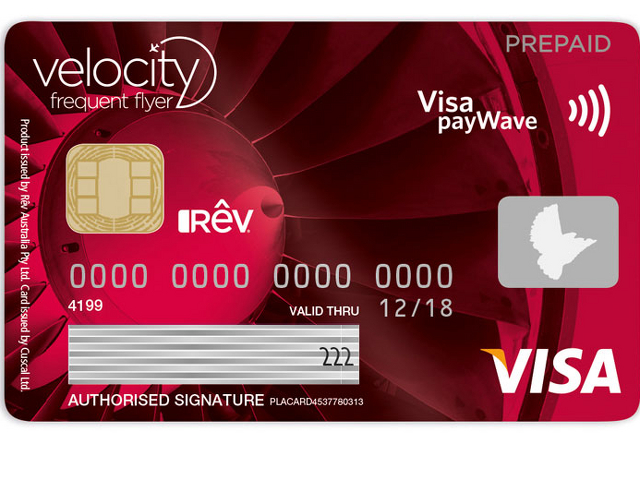
The New Virgin Australia Velocity Rewards Card – Mines Gold – Photo: Virgin Australia
Recently, I received a lovely little gift in the mail, all the way from the other side of the world. In the envelope was my new Virgin Australia Velocity frequent flier card. When I looked closer at the card, though, I noticed something different. The back resembled a debit card; in fact, it was a prepaid Visa card. It made me think about what has been happening lately between airlines, their frequent flier programs, and credit cards.
Over the last 12 months, two of the largest US-based frequent flyer programs have introduced minimum spending amounts to attain or maintain elite status. In 2014, United’s MileagePlus program will require a minimum amount of Premier Qualifying Dollars (PQD) along with the usual amount of miles or segments. Your PQD has to be made up of ticket spend on United-issued tickets or by purchasing upgrades to Economy Plus. To maintain your Gold Status into 2015, a Premier Gold flyer would not only have to earn 50,000 Premier Qualifying Miles (PQM), but they would need to spend $5,000 on airfare (taxes don’t count, sadly).
United’s move was almost a carbon copy of Delta’s SkyMiles program, however they just changed the words around. Replace ’œMedallion’ for ’œPremier’ and hey, presto’¦ welcome to SkyMiles! A very similar arrangement, but unlike United where all the tickets have to be issued by United, Delta allows you to earn your Medallion Qualifying Dollars (MQD) with partner airlines (but what qualifies as a partner is a whole story of its own). United only allows partner earning when booked through United.
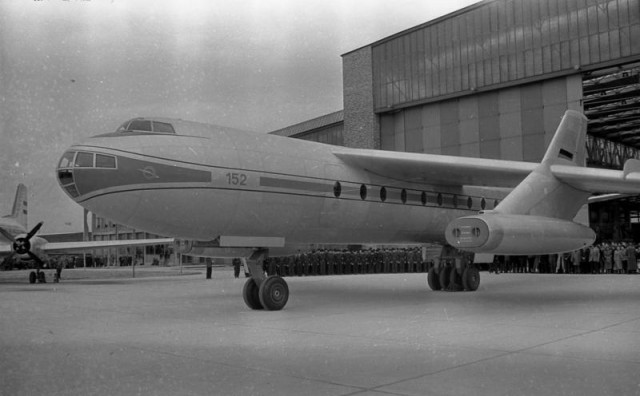
The Baade 152 rolls out – Photo: Bundesarchiv, Bild 183-54953-0004 / CC-BY-SA
The Junkers Ju-287 was never meant to be a transport plane; it was supposed to be another Nazi doom weapon that was nothing but the fever dream of Hermann Goering and his cronies. However, because of different circumstances, the aircraft would end up becoming Germany’s first airliner, the Baade 152 – which never entered service.
It was designed as a mid-winged monoplane bomber with either two or four BMW 003 engines, depending on the availability of basic aviation necessities like fuel and aluminum. It did have some notable technological advances for its time, however. It featured a forward-swept wing and (allegedly) a high cruise speed.
At the end of the war, the Soviets “inherited” a nearly-complete version of the Ju-287, which they called the OKB-1 EF-131. It had two wing-root mounted engines and a flight deck styled after the older Ju-88. When that design went nowhere, it was transferred to the Alekseyev Design Bureau [try not confuse Semyon Alekseyev with Rostislav Alekseyev – the father of modern wing-in-ground effect aircraft].
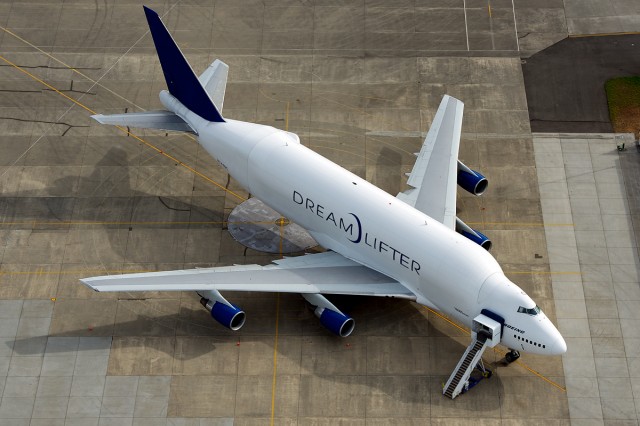
A Boeing 747-400 LCF (aka Dreamlifter) at Paine Field. Image: Bernie Leighton.
The Boeing 747-400 is already a large plane. When converted into a Dreamlifter, it only gets bigger. But this amazing aerial photo of N747BC, one of the four Dreamlifters built, makes it look a bit small.
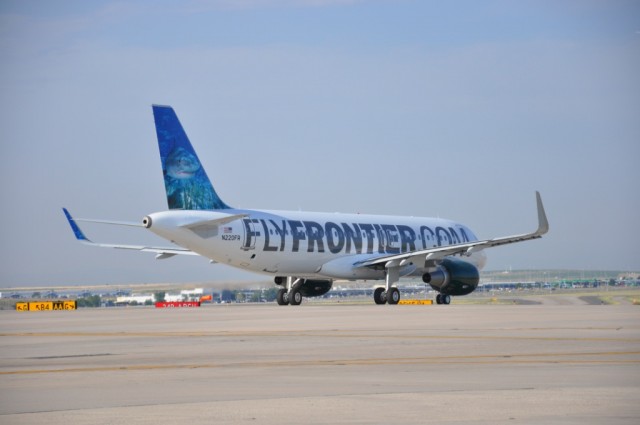
New Frontier Airbus A320 (N220FR) with sharklets – Photo: Frontier Airlines
Republic Airways Holdings has finally offloaded Frontier Airlines to a new owner, and right at the deadline. Earlier this week, Indigo Partners agreed to purchase Frontier and continue the push towards making them an ultra-low-cost carrier (ULCC). Indigo and its head, William Franke, know a thing or two about ULCCs; up until recently they were responsible for Spirit Airlines’ growth to become a leader in the segment.
Frontier’s acquisition by a new owner obviously raises questions about their future, particularly as it relates to their home base of Denver International Airport. Since 2006, when Southwest Airlines started ramping up its presence, Denver has been a three-carrier hub (with United Airlines being the third). Many have doubted the stability and longevity of such an arrangement; as a Denver-based flyer, I can attest to the fact that the three carriers have managed to keep airfares extremely low.
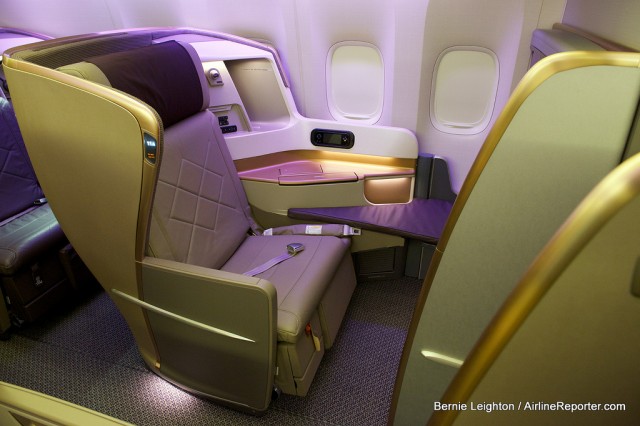
Singapore’s new Business Class will be tough to beat.
I have been lucky enough to fly quite a few different Business Class products on a variety of airlines over the years. Often, those airlines will directly ask me what I thought about their product and question which was my favorite. Each and every time, I find a few nice things to say about their product, but ultimately then have to admit that Singapore Airlines’ Business Class product on the Airbus A380 has been my favorite. None of the airlines have been insulted – at least I don’t think – because Singapore really does have a top-notch product.
When I learned that Singapore was updating their already impressive product, I was intrigued. Recently I was invited, along with Bernie Leighton (a Managing Correspondent for the site, who also holds elite status on all the airline alliances) to check out their first Boeing 777-300ER to feature Singapore’s new interior. Our tour took place at the Boeing Everett Delivery Center just hours before the plane was delivered to Singapore Airlines and took off, and I wanted to share both of our thoughts.
We also want to be able to share a bit more than thoughts and photos. You have the chance to WIN A SINGAPORE AIRLINES BOEING 777-300ER MODEL. Keep on reading to find out how…




